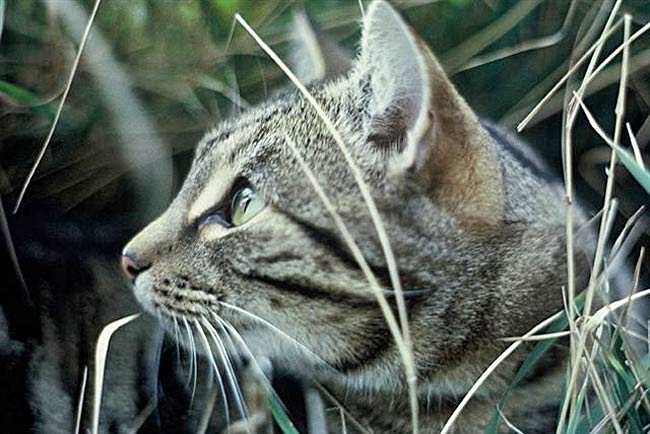Birds Glad Cats Eat Rats

A rare burrowing bird known as a Cook's petrel seems to have dug a real hole for itself: it lives on a small island crawling with hungry rats and cats.
Although the pests eat both eggs and chicks, new research suggests that the old adage "my enemy's enemy is my friend" holds true for the petrel, native to New Zealand's Little Barrier Island.
"What we found was that this little seabird did better when both cats and rats were on the island, rather than just rats," said Matt Rayner, a conservation ecologist at the University of Auckland. When the non-native cats were voted off the island with traps and poison, three times as many chicks perished than with both predators around.
"This really shows the not-so-pretty, unforeseen consequences of trying to restore an ecosystem to the way it was," Rayner said.
Rayner and his colleagues' study of the island's delicate food web is detailed in today's early edition of the journal Proceedings of the National Academy of Sciences.
A three-species tour
Little Barrier Island, situated off of New Zealand's northern coast, is about half of the size of New York City's Manhattan Island. The threatened Cook's petrel, a seagull-like bird, burrows small tunnels in the volcanic soil there and lays just one egg each mating season.
Get the world’s most fascinating discoveries delivered straight to your inbox.
"These little guys evolved without any sort of predation, so their clutch size is as small as it gets," Rayner said. He explained that English settlers likely dropped off domestic cats on the island in the 18th century, while small Pacific rats likely have lived there for close to 500 years.
Scientists documented the survival of chicks on the island from 2004 through 2007, combining the data with other information collected over the years.
Starting in 1970, when both cats and rats roamed the island, scientists took note of petrel chick survival. About one in three petrel chicks made it to adulthood, but eradication of the cats in 1980 caused chick survival to plummet to less than one in 10—a finding that initially seemed strange.
Scientists think the cats had policed the unruly rat population, lightening the predatory load on the petrels because rats served as a tasty alternative. In turn, the numbers of enemy rats were kept in check. Eradication of the rodents in 2004, however (effectively booting both of the petrel's new enemies off the island) boosted chick survival to roughly three in five.
Low-altitude changeup
The results seemed to lose ground at lower, subtropical altitudes where lizards, owls and other predators join the hunt for Cook's petrels.
"It is … puzzling that Pacific rats had such a small impact on Cook’s petrel eggs and chicks at low altitudes, yet were so devastating at higher altitudes," the authors said in their study. Rayner noted that this finding really spells out the sensitivity of island ecosystems—especially as they get larger.
"Islands like these are natural storehouses of diversity we need to protect," he said. "The larger the island, though, the tougher it is to control. You have so many different habitats to consider when attempting to manage a threatened animal."
Rayner said Little Barrier Island isn't the only island out there with threatened species that need rescue from mankind's follies, but cautioned that each needs to be intensely studied before a repair to the ecosystem can be effected.
"We need to develop ways to account for the incredible number of variables on an island ecosystem before we start tampering with it," he said. "It's not easy, but it is absolutely necessary."


